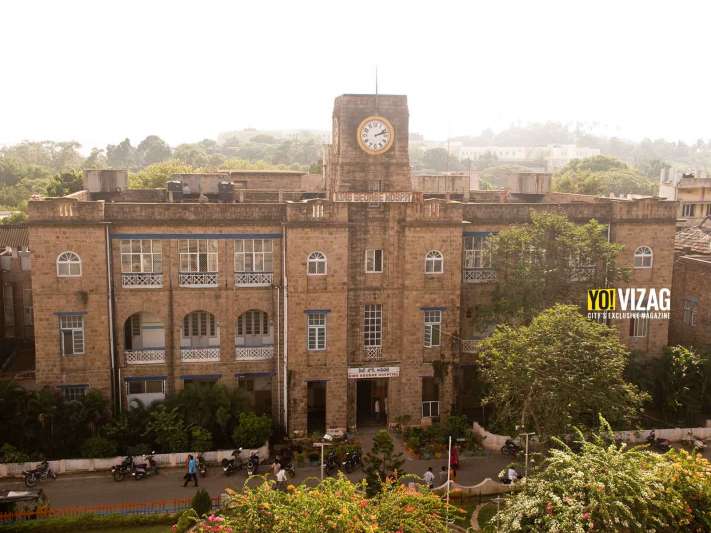Ironically, the much-despised diarchy of 1919 Montagu-Chelmsford considerably benefited Vizag in the form of the iconic King George Hospital. Our feature writer G V Ramesh traces its origins and history.
It is one of the few modern institutions in Vizag that spans almost two centuries of continuous service; what started as a humble Army-dispensary in 1845 during the British regime, King George Hospital – popularly known as KGH – has eventually grown to become the biggest General Hospital in Coastal Andhra as well as southern Odisha. The original construction of 1923 is built with dressed-stone masonry. It consists of majestic symmetrical three-storied buildings with a four-storied clock tower in the centre. Its regal countenance is not only awe-inspiring but has become a part of the grand heritage of Vizag ever since KGH adorned the city’s landscape.
After exclusively serving the British standing army of Madras Presidency since its inception in 1845, it was converted in 1857 into a civil hospital with 30 beds. It was the first public hospital with in-patient facilities in the city. Many years later, it was substantially upgraded. On July 19 1923, Dewan Bahadur Sri Panaganti Ramayaningar – popularly known as Raja of Panagal – the then Chief Minister (as well as the Minister of Public Health) of the Madras Province inaugurated the new building and christened it after the then British Monarch, as King George Hospital. The new complex housed the improved facilities with 192 beds and specialised treatments along with a medical college (the present Andhra Medical College) in its precincts. It was all possible due to the Government of India Act–1919, popularly known as Montague-Chelmsford reforms, passed by the British Government in 1919 as a step towards Indian Self Governance.
The hospital has grown manifold since then, both in structure and function; its vastness can be gauged from the fact that, on average, as many as 3000 persons are treated every day in the outpatient ward and around two hundred admissions happen every day in its inpatient wards, which have as many as one thousand two hundred beds. Almost all medical facilities have been set up in it; the latest being the super-speciality block established in 2012. Its sheer size can be measured from other important statistics like as many as five hundred doctors, two hundred house surgeons, one thousand PG students, four hundred nursing staff, six hundred class-4 employees, three hundred paramedical staff and two hundred administrative staff keep the hospital running round the clock.
The popularity of King George Hospital, Vizag stretches deep into Odisha as well; in fact, many lodges in its vicinity have nameplates written in Odiya. It is no wonder, that its name has always been associated with Vizag, that though the British might forget King George, Vizagites may never.










Discussion about this post